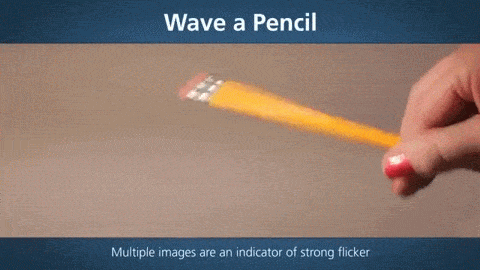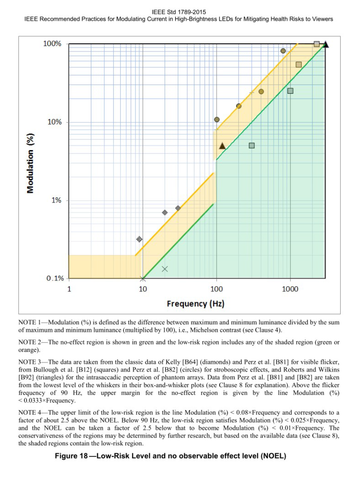
Latest EU Policy: Flicker-free Lighting Becomes a Must
LED lights are increasingly used in daily life, home, office, indoor and outdoor. As we transition over into an LED accustomed society, there is an issue that presents itself that not only has a negative effect on your health but as well your electronics. What exactly is flicker in LED lights and why are my LED lights flickering?
What is a flicker and what causes it?
There are occasions in life that strange phenomena are observed: when rapidly waving a pencil under a lamp, it is a series of static and individual images are created which is known as Stroboscopic effect. This effect captures the impression of rapid light flux fluctuations, which our vision perceives as flickering.
This phenomenon, whether noticed or not, occurs due to the change of visible light intensity over time; a light flicker. LED lights exhibit rapid repetitive changes in brightness over time which can cause visual, physiological, and neurological effects on our bodies; eye strain, fatigue, headaches, and difficulty in concentration. Light flickering occurs all the time, even when we don’t notice it.


Flicker index: Flicker index is defined as a measure of the cyclic variation taking into account the shape of the waveform. It covers 0.0~1.0. The greater the flicker index, the more substantial the flicker and the less stable of light output.
Percent flicker: Percent flicker, also known as modulation depth, is a relative measure of the cyclic variation in the peak-to-peak amplitude of light. It covers 0%~100%. The greater the percent flicker, the more substantial the flicker.

Step 2: Mitigate flicker risk by optimizing the design of LED drivers
- Use a more effective noise filter unit at the output end to stabilize the output current at a fixed value.
- Use a more reasonable driving topology of a two-stage (AC to DC + DC to DC) LED driving scheme to turn the unstable input current into a stable value.
By adoption of one or both methods mentioned above, the flicker index of an LED lamp will fall between 0.001 and 0.01, and the percent flicker down to 0%-5%. While the flicker index and percent flicker stay at low values, the flicker frequency will normally be read as 0.0Hz by a professional flicker meter. For those lights that require the flicker index and percent flicker above 0, designing a modulation frequency greater than 3125Hz will turn it into a high-frequency exemption level.
Step 3: How to verify the flicker-free LED
Without complicated and expensive measurement devices, your smartphone can be used to verify the flicker of an LED lamp. Unless needed, use a professional flicker meter. Turn your smartphone camera into slow motion mode, set both resolution and video frame rate at the maximum (like 4K at 240fps), and leave the camera as close to the LED lamp as possible. At this time, if the images on your smartphone remain stable in brightness without dark stripes scrolling, congratulations, your LED may be the real flicker-free.
If unfortunately, you have observed flickers in your LED lamps, then please email us or call us to name your preferred bulb type, or choose from our catalog by yourself, because they are truly flicker-free.

Leave a comment